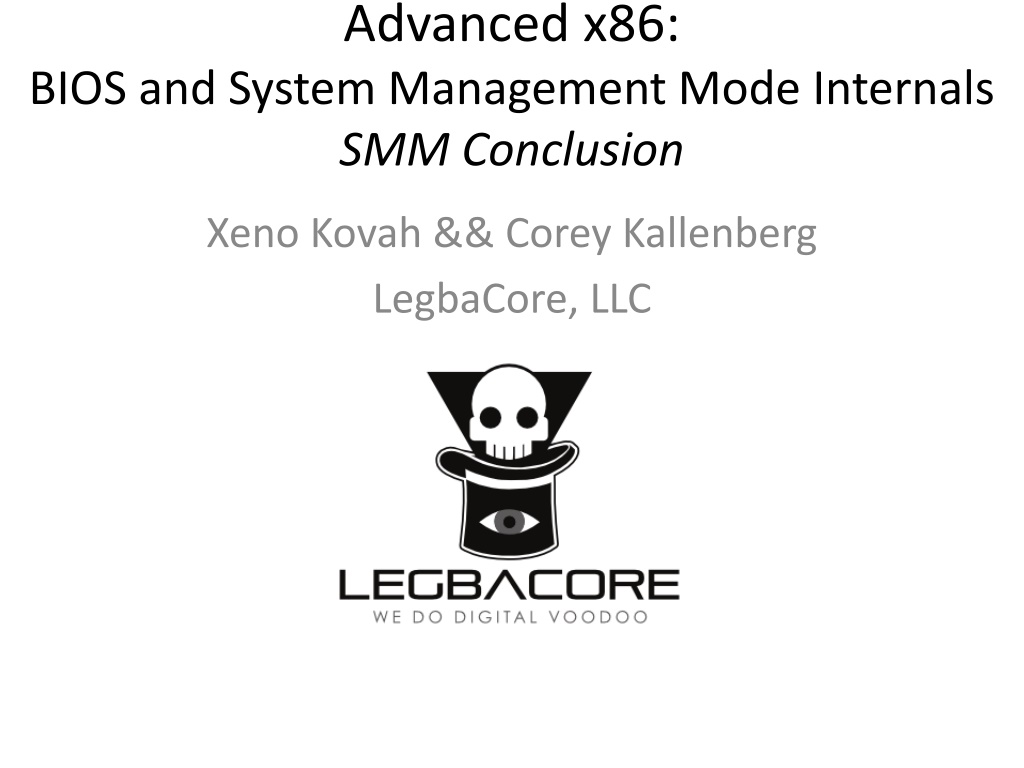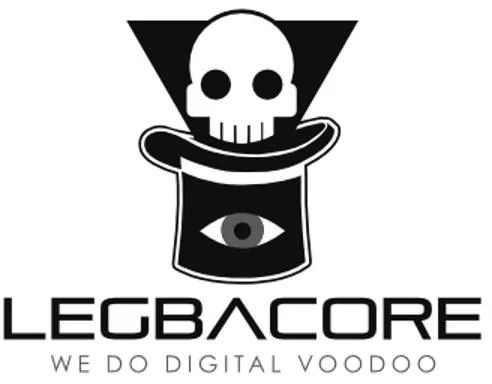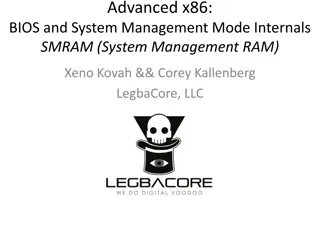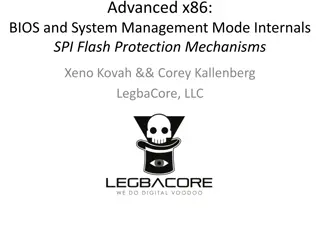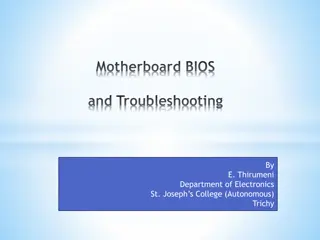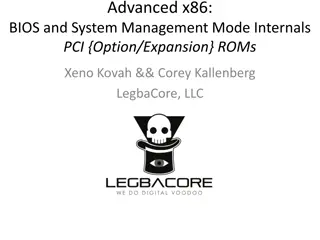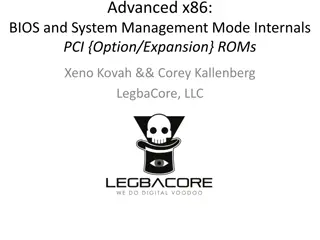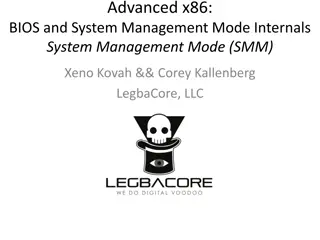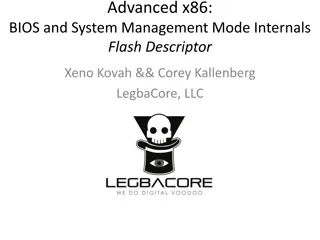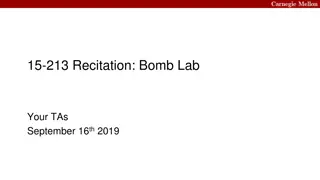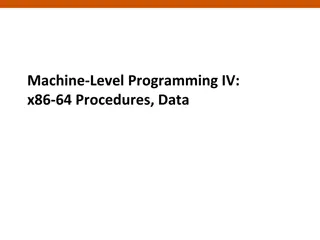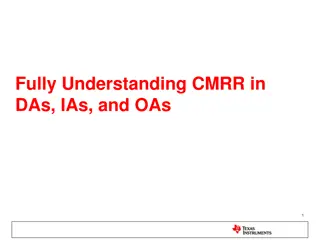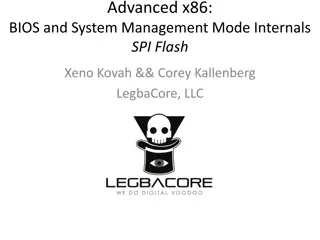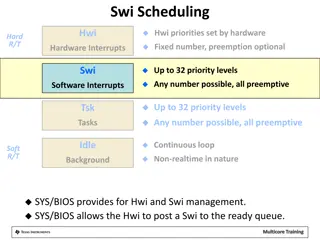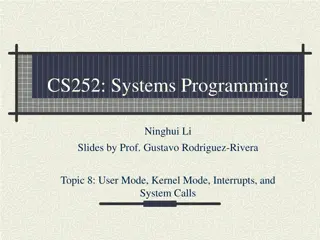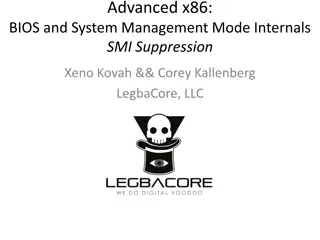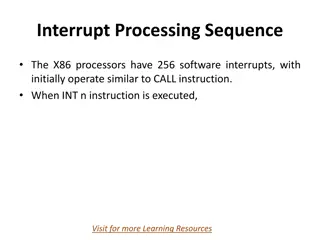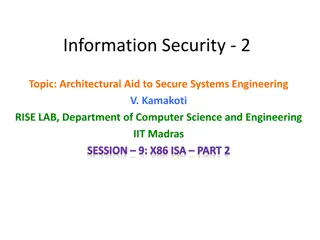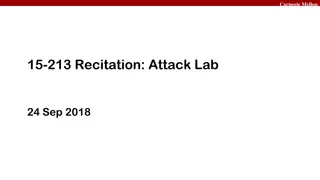Advanced x86: BIOS and System Management Mode Internals
In the realm of x86 architecture, delving into the intricacies of BIOS and System Management Mode (SMM) reveals critical insights. SMM serves as a guardian, safeguarding the BIOS flash and the system itself. Exploring the vulnerabilities and precautions surrounding SMM underscores the pivotal role it plays in system security. Understanding the implications of potential attacks on SMM underscores the importance of securing SPI Flash as the primary defense mechanism.
Uploaded on Feb 25, 2025 | 0 Views
Download Presentation

Please find below an Image/Link to download the presentation.
The content on the website is provided AS IS for your information and personal use only. It may not be sold, licensed, or shared on other websites without obtaining consent from the author. Download presentation by click this link. If you encounter any issues during the download, it is possible that the publisher has removed the file from their server.
E N D
Presentation Transcript
Advanced x86: BIOS and System Management Mode Internals SMM Conclusion Xeno Kovah && Corey Kallenberg LegbaCore, LLC
All materials are licensed under a Creative Commons Share Alike license. http://creativecommons.org/licenses/by-sa/3.0/ Attribution condition: You must indicate that derivative work "Is derived from John Butterworth & Xeno Kovah s Advanced Intel x86: BIOS and SMM class posted at http://opensecuritytraining.info/IntroBIOS.html 2
SMM Lockdown Summary Although these may generally only be implemented by the vendor, you can verify most of these Use TSEG Ensure entire SMRAM range is contained in the protected space SMI handler code should not execute code outside the protected memory range Don t use interrupts in SMM, unless you explicitly WBINVD the cache before generating an interrupt Ensure D_LCK is set to lock down both memory-mapping registers as well as SMRAM Verify SMRR are supported Verify SMRR are used Verify SMRR range overlaps/matches TSEG Verify SMM_LOCK bit is asserted to prevent an attacker from suppressing SMI# Verify the SMM_BWP bit is set in the BIOS_CNTL register to permit writes to flash only when processor is in SMM 3
SMM Conclusion Holds a lot of responsibility in protecting the system Protects the BIOS flash Protects itself, because it is instantiated by the BIOS from binary on the BIOS flash So it is very fragile in case of a writeable BIOS It is not difficult to locate and carve out the SMI code module and replace it with a malicious one Once written to BIOS the attacker can lock down the once- vulnerable system Which highlights a general problem with tools like Copernicus. We ll touch on this at the end of the Trusted Computing section Bottom line: If the attacker can write to the BIOS, they can modify SMM (and a lot of other stuff, unlocking protections, etc.) Therefore, the most important thing to lock down is the SPI Flash, first and foremost. The protection of which relies first and foremost on SMM 4
